Goats do well in practically all environments, as neither extreme cold nor heat affects them adversely. Milch goats (milk goats) have the advantage over cows, as they can be kept on poorer grazing where dairy cows cannot be kept so economically.
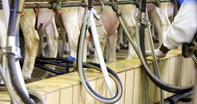
Goat’s milk is used for people especially babies that are allergic to cow’s milk. It is, however, low in folic acid. Also called vitamin B9, folic acid is necessary for the making of red blood cells, cell growth, and brain health.
Goat’s milk is higher in protein and minerals than cow’s milk. Goat’s milk may have a characteristic flavour because of the differences in the types of fat in the cream, which gives it a creamier and smoother taste. Goat’s milk may have a stronger flavour during the breeding season.
Milk Goat Breeds
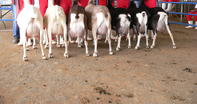
An important thing to consider when choosing a goat is: where you are going to get your next billy goat from? If the population of a particular breed is small, then there is a high risk that you choose one that is closely related to the animals you already have. This might lead to inbreeding.
The four main milk goat breeds in South Africa according to the Grootfontein Agricultural Development Institute are: Saanen (white). This is the most popular dairy goat breed in the world Toggenburg (brownish-grey) British Alpine (black) Bunte Deutsche Edelziege (BDE) - various colours but with a dark stripe from head to tail
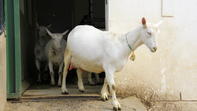
The white Saanen is a medium to large animal, which is sensitive to the harsh African sun and may develop carcinomas (cancer) of the udder.
They are best suited to cooler areas and need shade. Saanens are docile with high milk yields (2.2 kg/day), even though butterfat (3.1 - 3.8%) tends to be slightly lower than other breeds. They are suitable for commercial dairies.
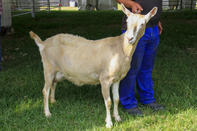
The brown Toggenburg was imported from Switzerland in the early 20th century and is the oldest dairy goat breed. The Toggenburg is a sturdy, medium-sized animal with soft fine hair. Males have large beards.
Toggenburg’s milk production is about 2.0 kg/day with a butterfat content of 3.2 - 3.7%. They are not suitable for tropical conditions and prefer cooler climates.
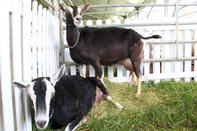
The large long-legged British Alpine milk goat is a striking animal - black with white markings, and a glossy coat (females). Nine animals - six females and three males were imported from the UK between 1924 and 1936.
British Alpine goats are good milk producers - 2.0 kg/day. They also have good winter milking and an extended lactation period. Butterfat content is 3.2 - 3.8%. They prefer temperate conditions and not too humid.
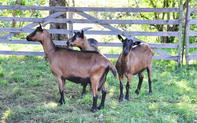
Buying a Goat
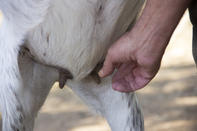
A goat that has already had one or more kids will have shown her potential - she should be a good mother and be able to produce high volumes of milk. Check her weight (for her age), the strength of the legs and feet, teeth as well as the shape and health of the udder.
She should have a firmly attached udder, without abnormal or hard sections that might be evidence of a previous infection. Males should be strong, healthy and well-grown. Dehorned males are acceptable.
The number of animals bought depends on herd size the farmer wants to establish, amount of money available, the size of the market that you wish to supply and the fast reproduction rate of goats.
By Marinda Louw